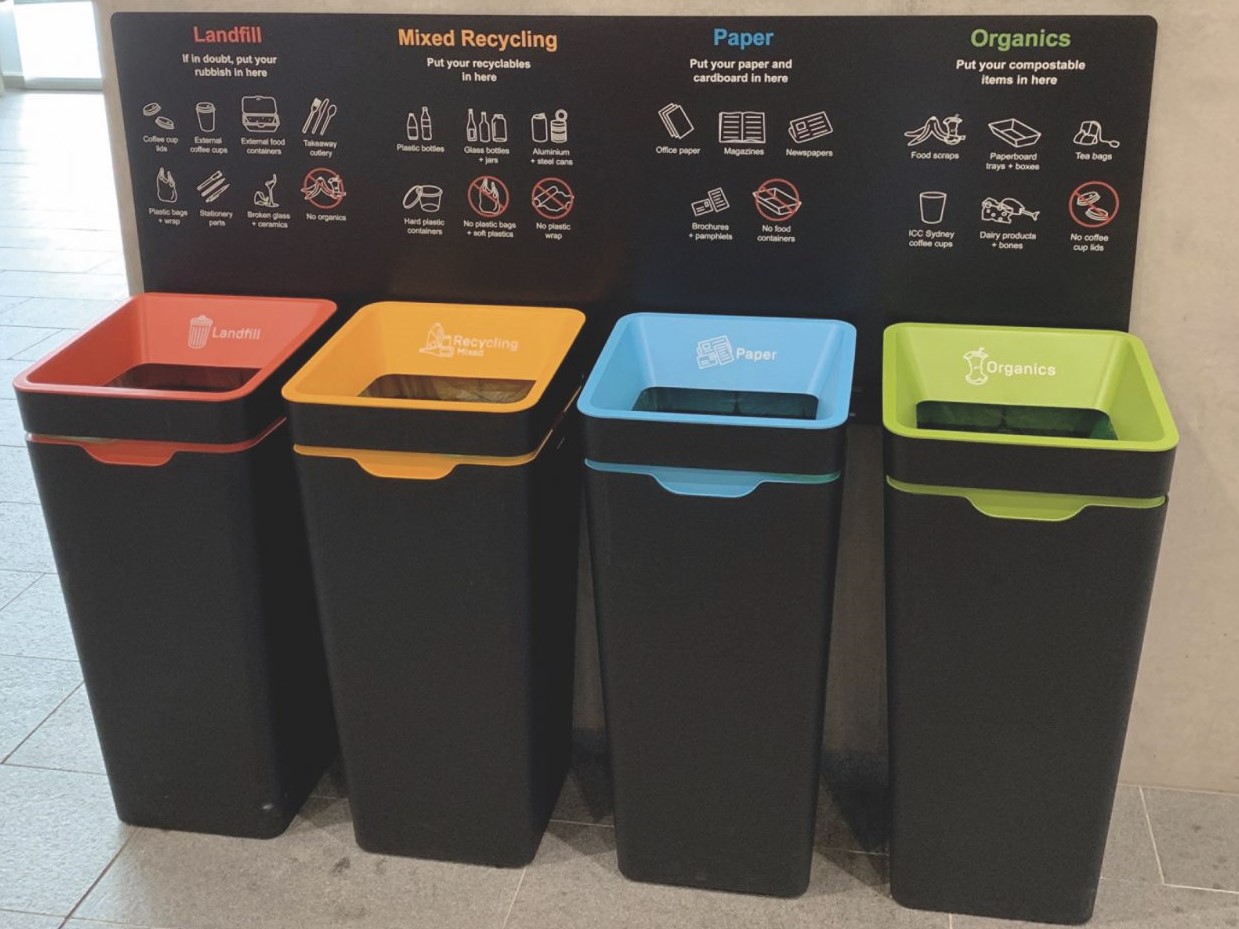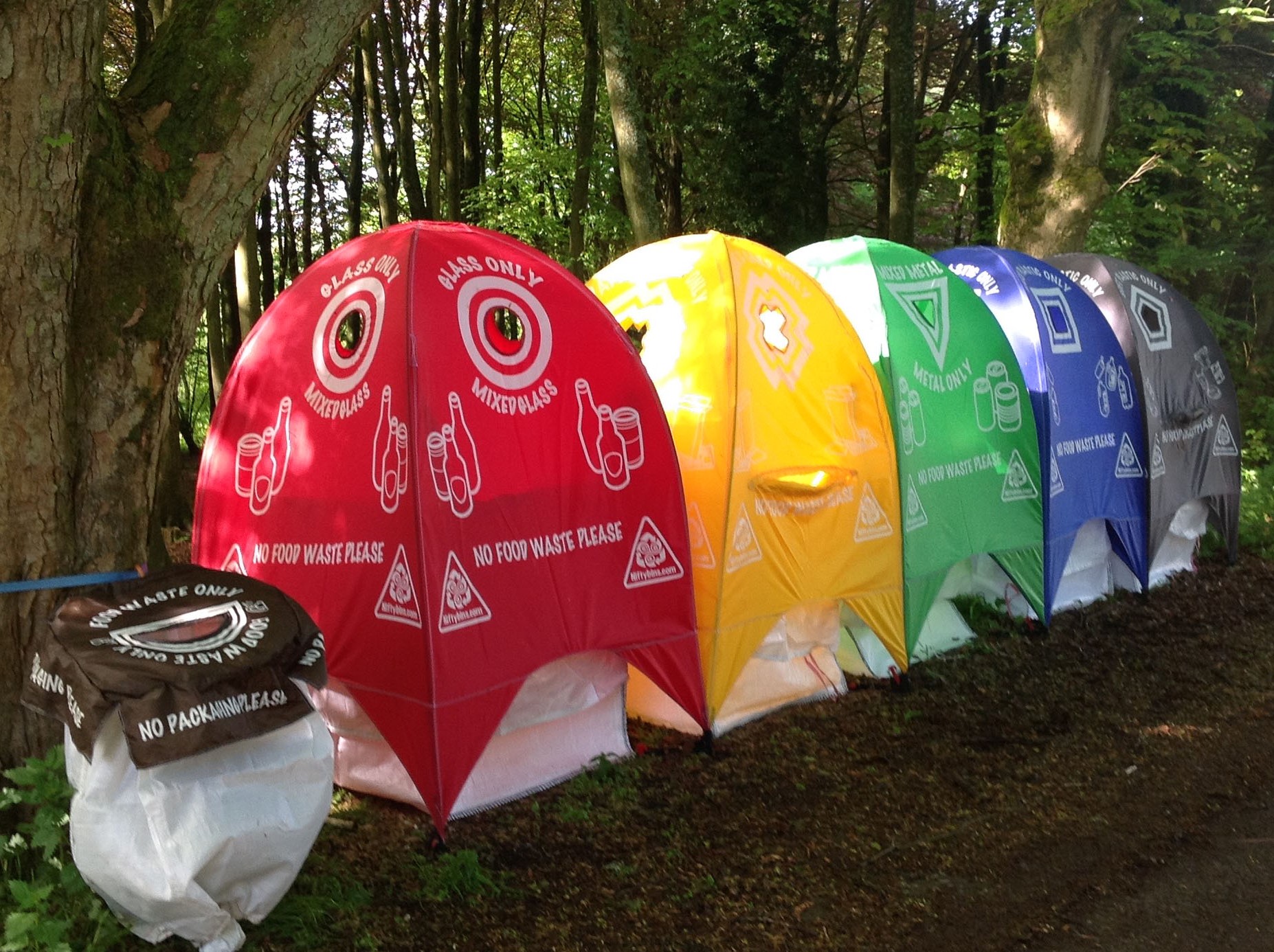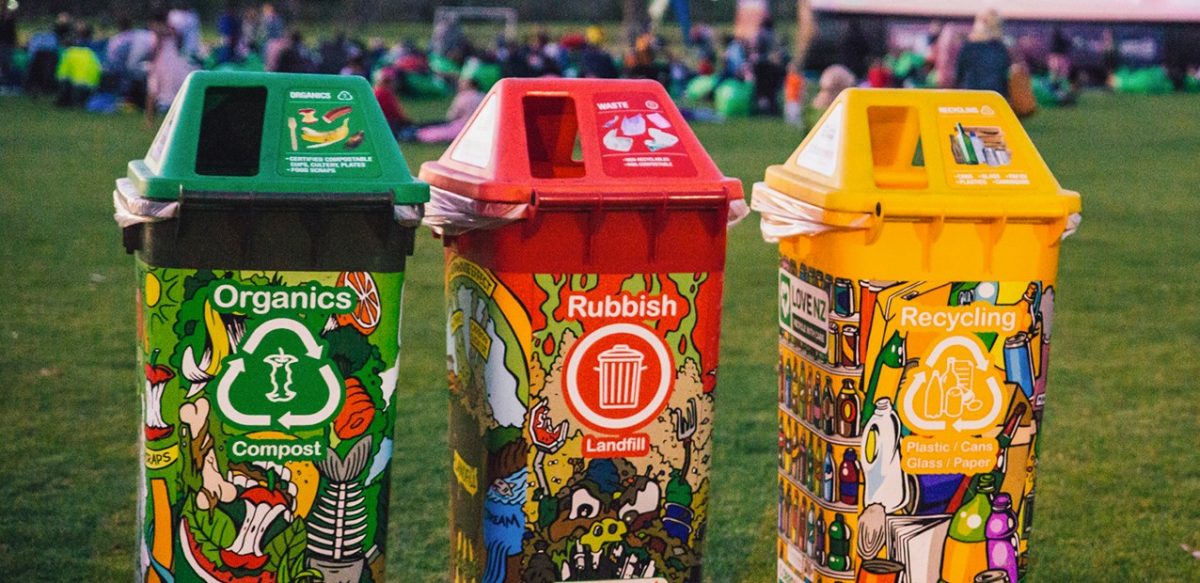Recycling
Recycling is the process of recovering waste materials to create other useful items, which is critically important to reducing waste, preventing the extraction of virgin resources and achieving a circular economy. While recycling conserves resources and reduces emissions, it should be viewed as a last resort after reusing and repurposing materials.
Blue Action: Recycle and divert materials from landfill for their “highest and best use” with approved waste haulers.
This includes having the proper bin design with relevant, clear signage and a sorting program.
“Highest and best use” as defined by the TRUE Zero Waste certification.
*Note: material streams will be based on available infrastructure in your region and from your event or venue’s waste haulier.
CASE STUDY:
The government of Munich banned the use of single-use food-service items at large-scale public events on City-owned land. City event organizers instead use reusable items, for which consumers pay a deposit that is refunded on return of the items. Moreover, for smaller-scale events (200-300 people), the City of Munich cooperates with local dishwashing rental services. The City of Munich also promotes returnable bottles!
On-site Bin Setup
Having an efficient bin system is essential for reducing contamination and setting your event up for success.
Keep in mind the following when setting up your waste receptacles:
Place bins in highly trafficked areas that are easily visible and accessible. Clearly visible waste receptacles improve proper waste disposal.
Ensure enough bins are placed at constant distances around premises. Bin users are unlikely to travel further than necessary to dispose of their waste.
Ensure a full range of recycling bin options are placed next to each other. Research has shown people are likely to use the easiest or most available bin option and will not travel to find the correct waste receptacle
Use clear signage and provide guidance on which bin is for which waste stream.
Use infographics and easy-to-read language.
Create custom cut out shapes on bin lids for different types of waste to encourage proper sorting. For example, using a circle cut out for cans, bottles and cups while using a thin line cut out for paper or cardboard.
Below are some sample waste management bin designs and signage ideas; be sure to customize the set-up to work with your event and location:



INNOVATION TIP:
Get creative! – Glastonbury festival encourages recycling at events by hand-painting bins, with clear labelling of waste types accepted.
CASE STUDY:
The 2019 BSR Conference – a global nonprofit organization hosting one of the longest-running sustainable business events – succeeded in hosting a sustainable event with rented furnishings, 90% of signage made of recyclable corrugated cardboard a zero-waste reception and menu construction, with 100% of catering waste diverted from landfill.
